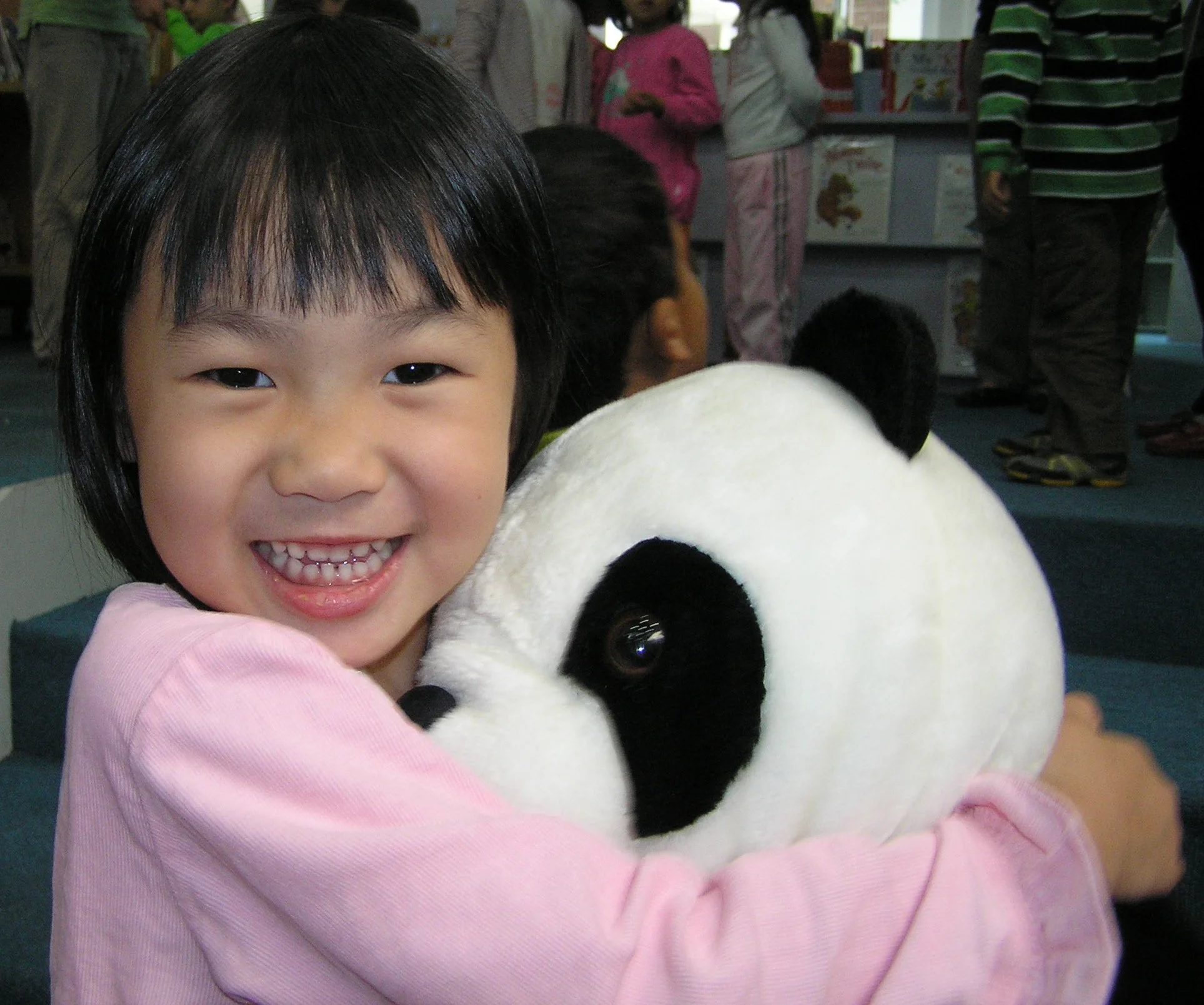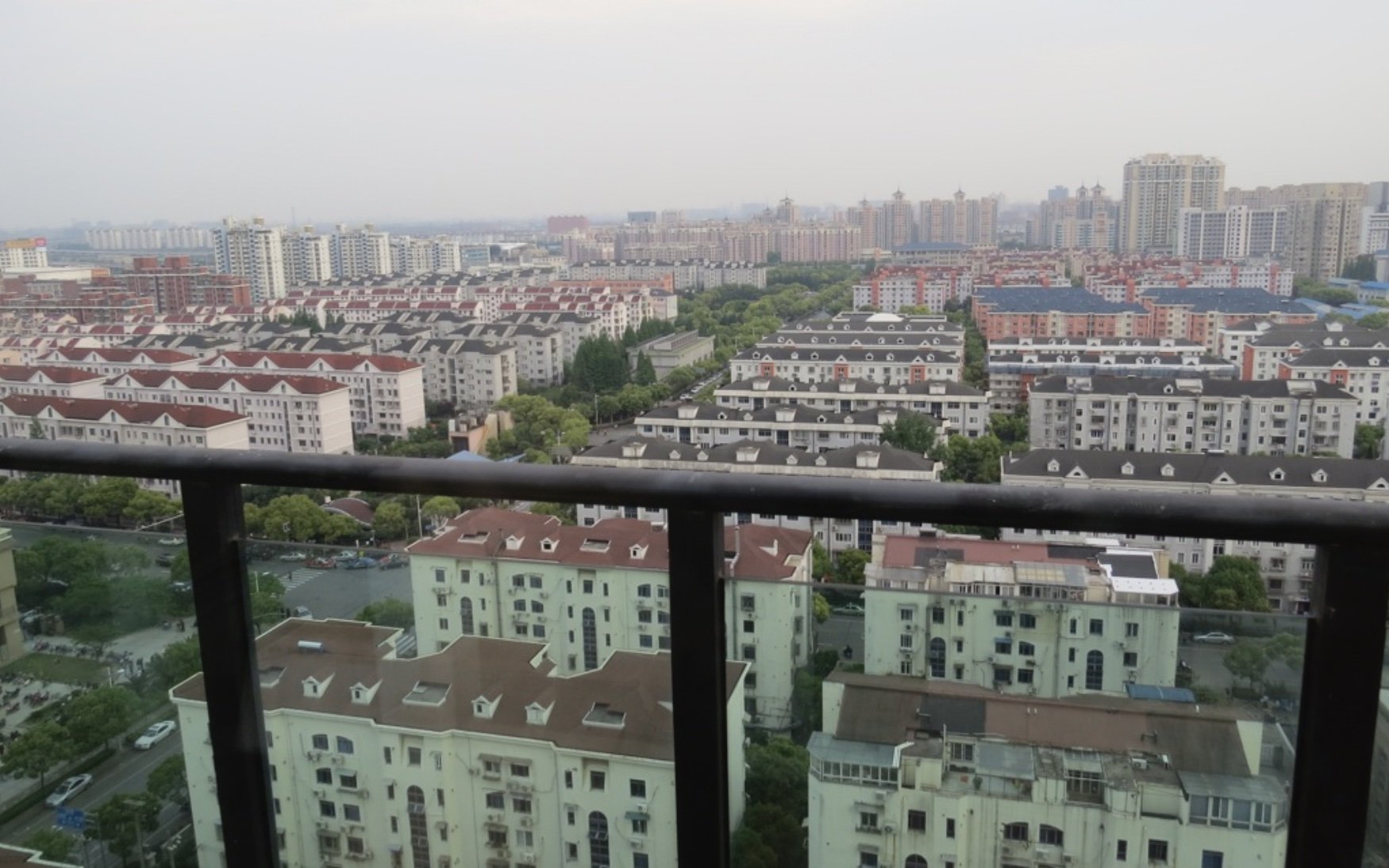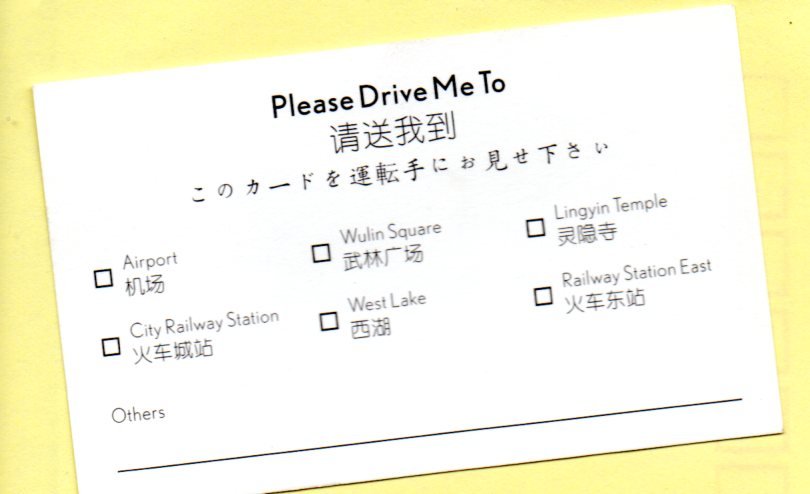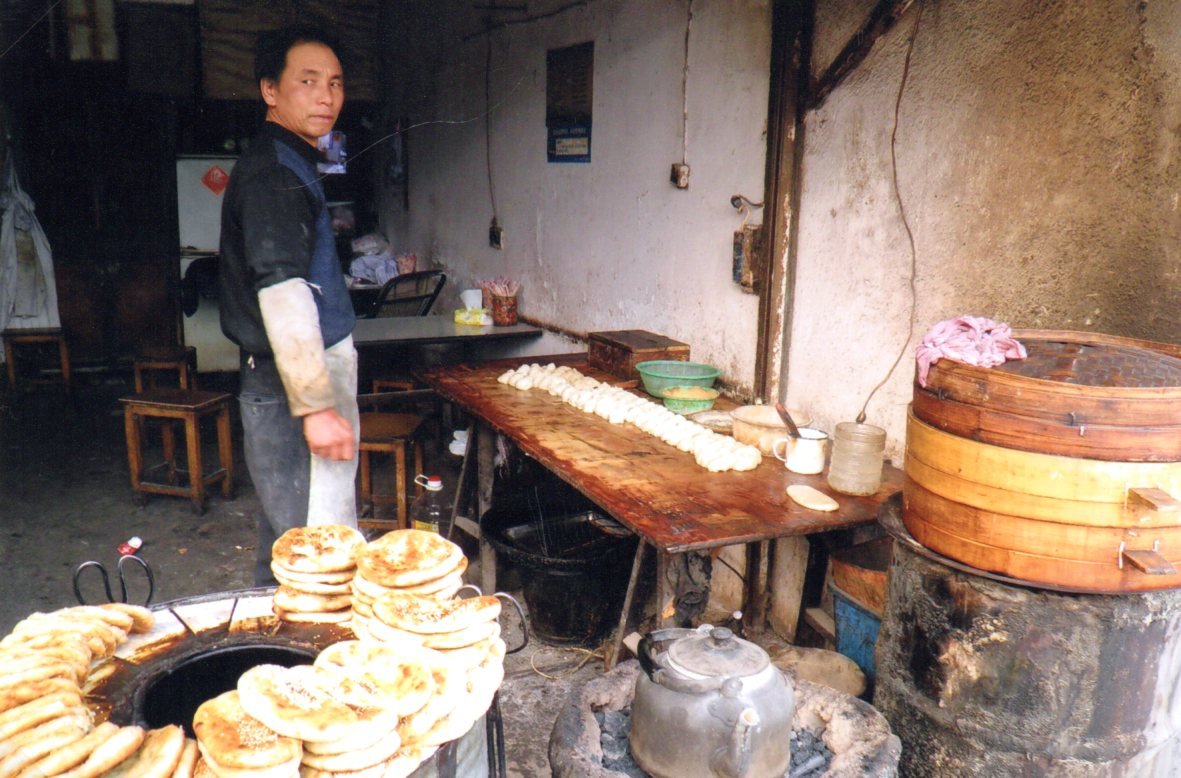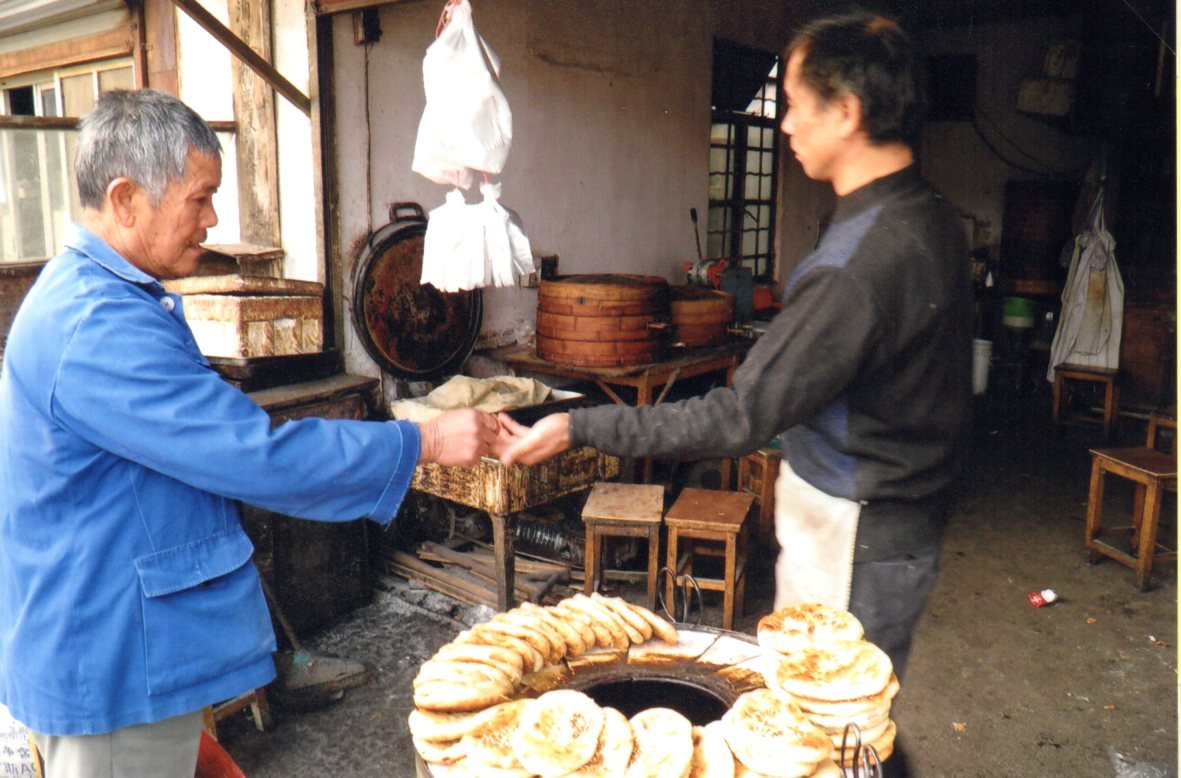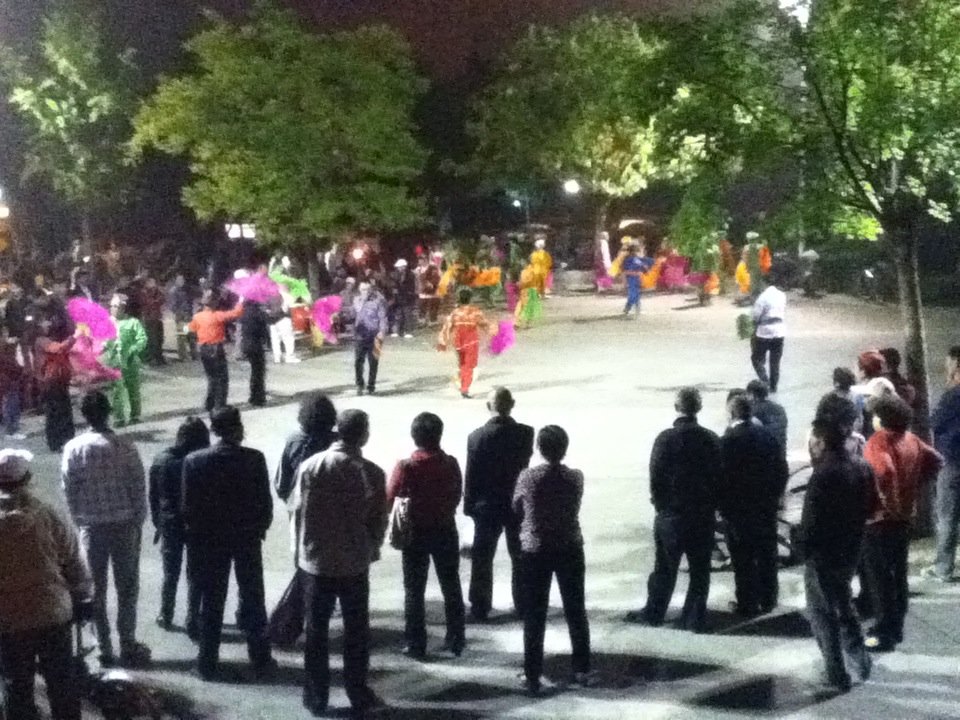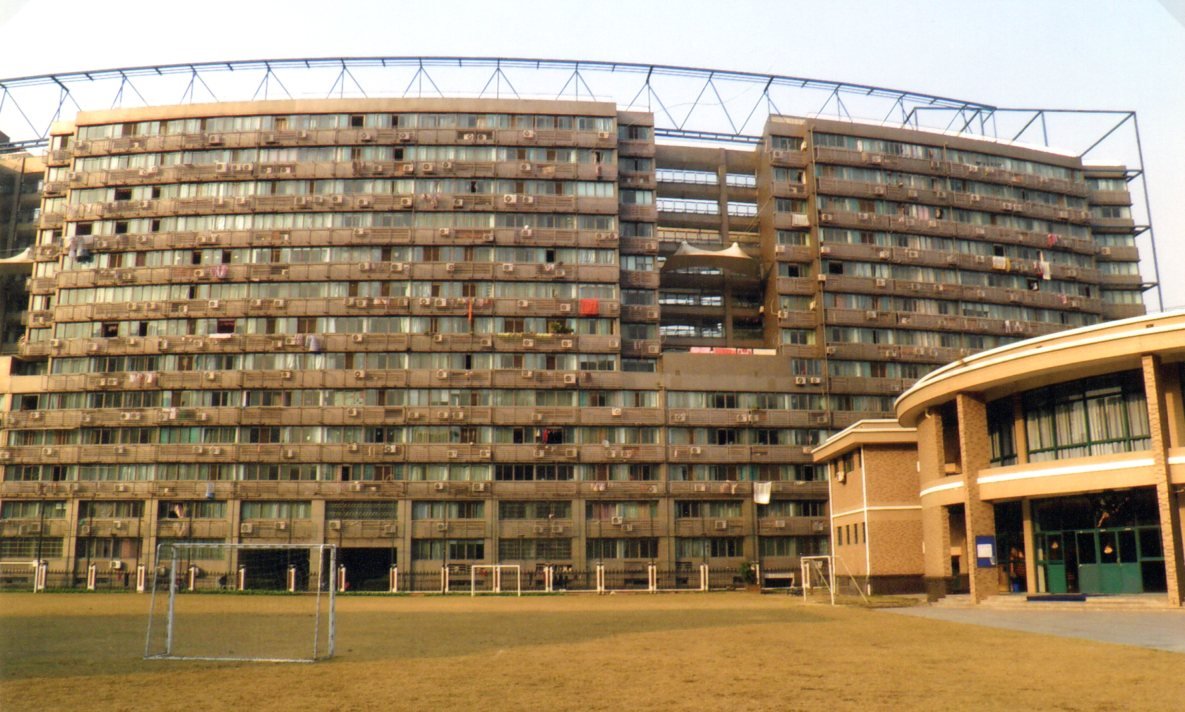Endless bridges and nothing but rows of apartment buildings lining the highways and elevated roads from the airport to the Shanghai Racquet Club where I will be living while working at an international school. The librarian and I really hit it off and, on my first weekend here we explore old Shanghai and make a trip to a nearby town.
A mansion for the afterlife.
After drinks on the Bund, the historic water front, we do some sightseeing together, visiting an ancient Chinese water town. Water towns are historic towns known for their bridges, rivers, and canals. Long, narrow walking streets, over curved bridges lead to a temple where a funeral was in progress. Buddhist monks burned paper houses and cars to send these luxuries along with the deceased to the afterlife. Shanghai seems to be a fascinating blend of old and new, tradition and invention.
We climb a tower with a different Buddha on each floor and visit the main temple where we throw coins into a large pot for good luck. Superstition is alive and well here.
The narrow shopping streets are packed with people - a black river of heads and elbows... Stalls sell brushes for calligraphy, durians, whole roasted birds on skewers, traditional clothings, silk wallhangings, wooden things, combs and everything in between. We visit a... cricket museum! Cricket pots, crickets preserved in jars, a table for cricket fighting... but no live cricket in sight.
Munching on nut and sesame squares, we stroll along the cobble stone alleys. This ancient ‘village’ does not feel like the China of the future!
The Shanghai Club, where I am staying, is a bit like a gated community where many teachers and other expats live. The clubhouse has tennis and racquetball courts, a tropical indoor swimming pool, an outdoor pool, and 3 levels of restaurant, bar and rooms. My room feels like a dorm room. It even offers unlimited internet via Hong Kong so I can access hotmail, facebook etc. A ‘real’ Chinese hotel would not have access to the world wide web.
As the visiting author, I do about 4 presentations each day for a total of some 3,000 students over several days. The school has a beautiful campus with an indoor pool, a theatre, large cafeteria’s etc. The elementary library is huge with a great staff. The teachers are full of energy and innovative ideas. Many are young but some are close to retirement. They are Canadian, American, Australian, New Zealanders and Chinese. Most have lived in many different places around the world. Even little 3rd graders will make a comment like “When I lived in Belgium..” or “I’m from Peru or Hong Kong…”. One of my sessions at school is an informal chat with EOL kids - not called ESL (English As a Second Language) here but English as an Other Language because these little ones easily speak more than just two languages. In the hallways I hear them switching from Chinese to English to German or Thai or Korean. Even the caucasian kids of teachers who might originally be from Canada or the US, have a Chinese nanny who only speaks Chinese to them so they are all fluent. One of the blond, Canadian teachers is married to a Chinese and is also fluent. The language sounds very, very difficult to master.
A traditional tea shop.
Shanghai has two main parts: Puxi is on the west side of the Huangpu River, while Pudong is on its east side. ‘Dong’ means east and ‘xi’ means west— the two areas are completely different culturally as well as geographically. Puxi is the historical heart of the city with traditional markets and old buildings along the water front, the Bund. Pudong is an ultra modern area with glittering skyscrapers, the Shanghai Tower and the Shanghai World Financial Center. In Pudong I found it hard to even get Chinese food - there were French bistro’s and Japanese sushi bars lining the roads. Although I did find one cool Chinese restaurant where you had to play rock-paper-scissors with the waiter to determine your discount. Hot water was served rather than ice water - better for the tummy, I’m told.
It you like modern architecture, or if you like to shop, see haute couture, this is a great place to visit. Skinny women in tiny mini-skirts, towering high-heels and dangling gold. Men in suits with smart-phones pressed to the ear. Children wearing the latest brand names, being pushed in the fanciest strollers you have ever seen. 26 million people in one city: bullet trains, elevated walkways - at times I feel like I’m on a different planet. In driving throughout the area, back and forth to different international schools, I do not see any slums. I’m told old neighborhoods have been bulldozed and people have been given apartments.
It’s hard to look across the street because of air pollution. Everything is constantly grey – as if it is very foggy. The top half of skyscrapers is erased in grey. I do not see blue sky or clouds. Just grey. There is an air pollution index which people receive on their smart-phones Something like ‘under 50’ is OK. If it is more than 85, the kids have to have indoor recess. While I was there, this index hit 300. And that was not an exception.
One morning it rained. In the car to school, the librarian commented to the driver that the drops were so big and oily. He replied, “Oh yes, we are making rain today.” Apparently they have a method of ‘making it rain’ when they need it... A scary concept.
Hotels have these handy, bilingual cards that help taxi drivers to understand where you have to go.
The traffic is suicidal here. People ignore any lines on the road, ignore traffic lights and just barrel along. One teacher grinned and said, “I have wanted to drive like this since I was 15. Now I finally can. In the US I’d lose my license immediately driving like this...” It’s interesting to realize that most people have only had cars for less than 15 years or so. This is basically the first generation of automobile drivers.
And guess which brand of cars most people drive here? Volkswagen! Almost every other car is a VW. VW Santana is what you see most but also lots of Golfs. With a few Honda’s, Ford and Nissans in the mix. A license plate costs US$5,000 which is why most foreigners don’t drive here.
The drive to school is almost 45 minutes. The first part is along wide avenues lined with BMW and Cadillac dealers and lots of high tech companies. Once we turn onto smaller roads they are lined with small shops, more bicycles and motorbikes, people going to work and school. School is mandatory here but not everyone can afford the books and other associated costs.
It is Fall but there is not one leaf on the ground. Ladies are constantly sweeping. Their brooms are a bamboo stick with twigs tied to it. Every leaf that falls is immediately picked up.
The school is on the edge of the South China Sea. People have little garden plots along a brown canal. We follow a dike and I see men fishing. You can buy steamed rice in bamboo steamers or steamed buns along the road. We’re in older China again. We stop to buy bread. After we order, the baker rolls out little balls of dough, flattens them, sprinkles them with sugar, and slaps them to the inside of an old drum in which a fire is smoldering. After 5 minutes he peels the browned buns from the side of the drum and hands us the warm, delicious breads to eat.
Grandpa’s and puppies are the same anywhere.
Women carry bundled up babies or families race by, 4 on one motorbike. A lovely, timid Chinese lady told me that, if a couple is an only child each, they can have 2 children now. When the couple has siblings, they can only have 1 child. Women retire here at age 55 and men at age 60. They do get a pension which they have paid for while working. There is health care but it costs. They can buy insurance if they can afford it. She explained that people whose families have always lived in Shanghai have more rights than others. Anyone who has come here from elsewhere in China, even several generations back, is considered an immigrant, often an illegal immigrant, even though they are all Chinese.
In my spare time I loved strolling around the city on my own. I do some shopping at the Pearl Market. I walk all over to the Flower Market with rows and rows of poinsettias, decorated Christmas trees, amazing flowers and orchids. The smell was heavenly.
Across from my hotel is a park. At 6 AM it is bustling with people: joggers, walkers, people playing games like badminton and something with two sticks, a string and a large rubber ball to catch. It makes a sound like didgeridoos. People are doing ti chi. There are birds in cages hanging from trees and lovely statues everywhere. There is often ‘square’ dancing in the street at night.
Square dancing in the park at night.
After my last day at school in Shanghai, the wonderful librarian takes me out for a one hour foot massage. Heaven! Then we enjoy a traditional Chinese dinner. Chicken followed by warm passion fruit stuffed with rice, dragon fruit cut open with fruit balls inside, fish, scallops with garlic, a bowl of fungus (those curled up fungi that you see growing on tree stumps…), rice and many other scrumptious things. Afterwards we are served what looked like bread slices but is a slice of packed rice sprinkled with brown sugar. I thought this was dessert but it was followed by more meat and soup. I love learning about different foods and traditions.
For the last week of my month in China, I am taken by car to Hangzhou, a 3 hour drive. Someone in Shanghai seriously told me, “Oh, you will like Hangzhou. It is a village.” So I pictured a small town like the ancient water village we visited. Imagine my surprise that this capital city of China’s Zhejiang province has 10 million people! A mere village apparently, compared to Shanghai’s 26 million…
Getting to Hanghzou was an amazing race China and a comedy of errors rolled into one… A driver in a gorgeous, fancy black Buick with leather seats picked me up from my hotel that morning and told me to leave my luggage in his car because he would be taking me to Hanghzou after school that day. I double checked that with him before he left. Yes, he would be there at 3.
But at 3, no car. The company phoned to say they were trying to get into the car because the key broke - or he lost the key, not sure which. Finally around 5 he showed up. With luggage. As soon as we left, the driver got lost in Shanghai. But after some u-turns and going back where we came from, we finally got out of the city. He had a GPS and I don’t know why it didn’t seem to work. He did not speak a word of English.
It's a 3 hour drive from Shanghai, most of it was through endless cities. The countryside reminded me of Holland: flat, polders, greenhouses, dikes, irrigation canals lined with poplars. The air pollution is still unreal. Everything is grey. I wasn’t really sure what kind of weather it was and no use taking photos of the view.
When we finally drove into Hanghzou there was enormous traffic - obviously rush hour. The driver had no idea where he was going. He kept babbling in Chinese to himself, or perhaps to me. He would slow down to almost stopping right on the highway and hesitate - do I take this exit or not? Finally he did and then jumped out at a light to ask another driver for directions. Off we were again, mumbling and hesitating... in the dark now.
After he stopped for the fifth time to ask directions, I asked for his cell phone and called the school secretary and asked her to tell him where he was. When he finally found the hotel, it turned out to be the wrong hotel. So I called her again.
They explained where the right hotel was and we could actually see it - a highrise across the river... He drove in circles, stopped, asked, got lost. We lost sight of the building. I kept pointing him in the right direction. He had NO sense of direction... It was hilarious. But it was getting later and I had done presentations at school all day and would have to perform at the next school tomorrow all day. Such is the life of a visiting author…
However, when we finally did make it, my hotel suite was amazing. Apparently the hotel was full so they upgraded me to a suite. I had a living room with all mirrors and glass, a couch, chrome furniture, sunken lights. A bedroom with kingsize bed, wardrobe, two bathrooms - the whole bit. If only I could sleep in and stay in bed…
The huge school is dwarfed by apartment buildings…
The school was fabulous, with lovely polite kids. Performing all day is hard work but these students are so keen and so interested in everything I say. And this trip I did not lost my voice or got a cold, which is great.
At night I strolled through a small street lined on both sides with stalls - mostly food. Everyone seems to come out at night to walk, to visit, to buy cooked food. Stalls have steamed vegetables, steamed buns, grilled meat on skewers, flat breads being fried in oil - it looks, sounds and smells wonderful. I loved strolling around and watching everything and everyone. I was told that many Chinese families eat out, from stalls on the street, because their kitchens are so tiny or it’s too hot to cook.
I walked into a store and, despite no one speaking English and me not speaking any Chinese, found a section where tea was sold. When I asked by gesturing slurping tea from a cup, they brought me a mug. But eventually I found the tea itself. Loose tea in bags, solid rounds of pressed tea, tea with flower seeds, with sugar chunks and seedpods, the most amazing teas I’ve ever seen. I was handed a solid ‘cake’ of tea and wasn’t sure what it was. But it’s a packed round of tea leaves with herbs.So… I did buy some tea in China.
Then it was back to the future again. The drive back to Shanghai was another 3 hours along 6 lanes highways, at top speed, past nothing but houses. A few small fields or greenhouses, but mostly an endless sea of urban settlements. Not uniform like the rigid rows of numbered apartment blocks in South Korea. Here, they are all different subdivisions, high and low, with different styles and colours. Some very modern skyscrapers of gleaming steel and glass. Most concrete flats with laundry on the balconies. I have not seen any signs of communism except for some billboards declaring ‘Be dedicated. Love your work.’ I also saw large, official highway signs ‘emeryency lane’, and ‘hardened verge’ which I assume means ‘paved shoulder’. And the worst one - ‘disformed person’ on the handicap toilet door.
From downtown Shanghai I took the Maglev train to the airport. This is billed as the fastest train in the world. It reaches speeds of up to 431 km/hr (268 mph)!
Spending a month in Shanghai and surroundings was an amazing experience. The intrigue and mystery of food and customs, culture and people never ceases to amaze me. And I’m grateful for the opportunity to make friends around the world.
BOOKS about China
RESOURCES:
Shanghai: https://www.topchinatravel.com/shanghai/shanghai-tourism.htm
Maglev Train: https://www.chinahighlights.com/shanghai/transportation/maglev-train.htm
This is a great blog post about Shanghai: https://wanderingwagars.com/what-to-do-layover-in-shanghai-china/
Click here to read about Xi’an.
Click here to read about Beijing.
